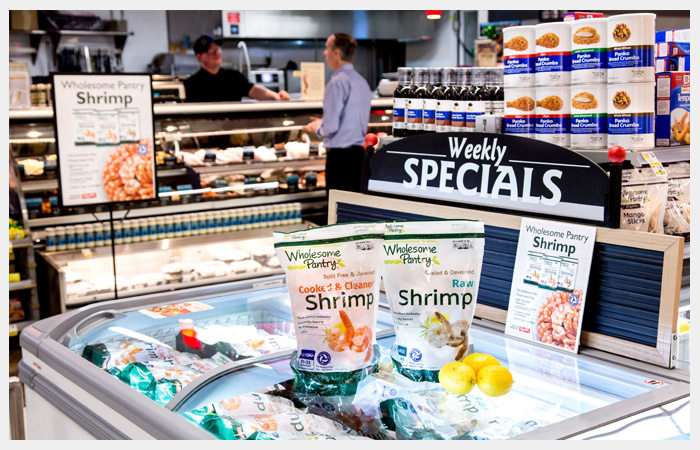ShopRite is going the extra mile to offer customers sustainable seafood choices.
Many people want to choose sustainable seafood, but that’s not always easy.
 “No matter where I go, when the topic of seafood comes up, people have so many questions about it,” said Bob Cerullo, ShopRite’s director of Seafood. “They’re bombarded with information from all sides about sustainability.”
“No matter where I go, when the topic of seafood comes up, people have so many questions about it,” said Bob Cerullo, ShopRite’s director of Seafood. “They’re bombarded with information from all sides about sustainability.”
To help consumers find sustainable choices, ShopRite developed a sustainable seafood policy that has been in place for more than a decade. The supermarket works with suppliers who ensure that wild-caught and farm-raised seafood is sourced from certified, sustainable fisheries and farms.
“The program means we guarantee that there will be seafood for the future and that what we sell is excellent quality for our customers and their families,” Cerullo said.
Cerullo and his team are always looking for ways to offer customers new sustainable options. In fact, ShopRite introduced Wholesome Pantry Shrimp in January 2018.
“We recognized our customers wanted a clean product with no antibiotics, no preservatives, no additives or hormones,” said Tom Domino, Jr., ShopRite’s Seafood procurement manager.
 The shrimp is certified with four stars by the Global Aquaculture Alliance, meaning that all stages of the production process – including the feed mills, the hatchery, the farm and the processing plant – follow Best Aquaculture Practices (BAP). And BAP encompasses not just environmental responsibility, but also food safety, animal welfare and social conditions for workers.
The shrimp is certified with four stars by the Global Aquaculture Alliance, meaning that all stages of the production process – including the feed mills, the hatchery, the farm and the processing plant – follow Best Aquaculture Practices (BAP). And BAP encompasses not just environmental responsibility, but also food safety, animal welfare and social conditions for workers.
Wholesome Pantry Shrimp is available frozen at your local ShopRite. Customers often have questions about buying frozen seafood and whether it’s sustainable.
“There’s a widespread belief that fresh is better than frozen,” Cerullo said. “And a long time ago, when seafood wasn’t sold, they froze it. But with modern techniques, they freeze it very soon after catch.”
 In fact, all Wholesome Pantry Shrimp comes from one family-owned facility, where it is processed and then frozen within hours of being harvested, so it reaches your local ShopRite in peak condition.
In fact, all Wholesome Pantry Shrimp comes from one family-owned facility, where it is processed and then frozen within hours of being harvested, so it reaches your local ShopRite in peak condition.
Buying frozen seafood actually helps use just the amount you need when you need it, which helps you waste less food – another sustainable action – and save money.
Cooking frozen seafood does require a little more knowledge, but most retail packages include handling instructions, and some offer recipes.

“And once people get over the myth that fresh is better than frozen and they give it a try, they are happy with the results,” Cerullo said.
Customers with questions about choosing sustainable seafood can always ask one of ShopRite’s knowledgeable in-store Seafood associates.
